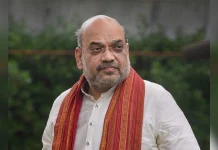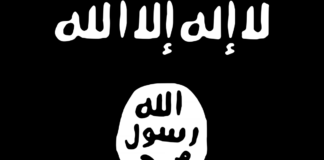The Liberation of Goa didn’t happen till 19th December 1961, even though the rest of India gained independence in 1947! It happened after thousands of freedom fighters fought a long arduous battle for freedom against the Portuguese Govt. Most Indians think that the whole of India attained independence in 1947, but this is far from the truth. It’s a strange fact that Goa, Daman and Diu were under Portuguese rule till 1961, and Pondicherry, Mahe and Yanam were under French Govt till 1954.
By SamvadaWorld Staff
Though the Goa liberation Movement started in the first decade of the 20th century, it took a long time to gain momentum. Louis Briganca started the Portuguese daily newspaper advocating a free Goa. Immediately Portuguese Govt banned all independent press and publications and suspended people’s civil rights. It needs to be specifically mentioned that the Portuguese Catholic Church, which continued its centuries-old oppression politics, preached and canvassed in churches that Christians should remain in Portuguese country and shouldn’t have any relation with India.
Tristu Braganca Cunha started the Goa congress in 1928 and wanted it to be affiliated with All-India Congress, but owing to the pressure from the Portuguese Govt, it remained dormant. Later Goa Congress was started in the city of Bombay in 1938. Even as the entire nation was engulfed in the freedom movement by the 1940s, the few attempts at the Goan freedom struggle within Goa were brutally suppressed by the Portuguese govt. Cunha was arrested in 1946 and AG Tendulkar became the President of the Goa Congress.
Dr Ram Manohar Lohia and his associate Dr Menezes started the Non-Cooperation movement in Goa, and both were immediately arrested and released later. Thousands of freedom fighters were arrested and put behind bars. Braganca Cunha, Purushottam Kakodkar, Lakshmikant Bhembre and many other prominent leaders were arrested and imprisoned in Lisbon, Portugal. All attempts at building the freedom struggle were met with brutal suppression and imprisonment. Upon Gandhiji’s clarion call, the Quit India movement was started by the freedom fighters in Goa too. People and the leadership of the Goan liberation movement believed that Goa too would attain Independence from the rest of India in 1947. However, unexpectedly Dr Lohia announced that Goa would have to continue its struggle. A few local leaders wished that Goa should remain an autonomous independent nation under the `Portuguese Commonwealth’.
The Goa Liberation struggle continued and reached a critical stage. `Azad Gomantak Dal’ leaders Viswanath Lavande, Narayan Harinayak, Dattatreya Deshpande, and Prabhakar Shinari led bands of freedom fighters and demonstrated in front of police stations. All the leaders were arrested and jailed in faraway Portugal and Angola. The revolutionary Sivajirao Desai, who founded the `Goa Liberation Army’ blasted a government mine. Several leaders who were offering peaceful resistance including PD Gaitonde were arrested and jailed in 1954.
Rashtriya Swayamsevek Sangh’s (RSS) Sri Jagannath Joshi unfurled the tricolour for the first time atop the Secretariat in Panaji in 1955, thousands of Satyagrahis belonging to RSS and Janasangh along with members of other parties were arrested, many Satyagrahis gave the supreme sacrifice of their lives when Portuguese police brutally fired upon them. Sri Rajabhau Mahankal, a swayamsevak from Ujjain entered Goa leading thousands of peaceful satyagrahis. The first three rows of marching satyagrahis lost their lives then and there in the ruthless Portuguese Govt firing.
A woman activist Sahodara Devi, who was marching ahead to hoist the Indian tricolour, was fired upon and she fell to the ground. Rajabhau Mahankal immediately seized the national flag not letting it fall to the ground and ensuring that it is hoisted by activists. Police shot at him through his eyes, and he was martyred. Several freedom fighters were incarcerated for decades in Portuguese prisons. The movement intensified after 1954-55. It is tragic that even after Goa was freed in 1961, Jagannath Joshi was still languishing in jail; he was imprisoned for 17 long years. Similarly, Dr Gaitonde and Sriyuth Deshpande and many others were transported and imprisoned in Portuguese prisons.
Govt of India’s stance!
In December 1947, independent India’s Prime Minister Nehru established diplomatic relations with Portugal and requested the Portuguese government to allow Goa’s merger with India. Portugal didn’t accept the request just as France hadn’t agreed to merge Pondicherry with India. Though the Indian Govt tried to exert pressure on Portugal through the aegis of the United Nations, it didn’t yield any results. Unfortunately, the Indian Govt didn’t lend much moral or political support to the freedom movement within Goa. Even more adversely, Portugal complained internationally that the Indian Govt is allowing Satyagrahis to enter Portuguese territory, which it said, is tantamount to questioning Portuguese sovereignty. PM Nehru gave into Portuguese pressure and even gave a statement that Satyagrahis actions’ did not have the approval of Govt of India.
Expectedly, the native freedom movement in Goa was adversely affected by Nehru’s statement. In 1954, Satyagrahis entered Dadra first, then Nagar-Haveli fought valiantly with the Portuguese army, won the battles and freed these territories from Portuguese control. (Portugal even filed a case in the International Court of Justice, although the case was never decided). Despite the successful battles of Satyagrahis with the Portuguese army and the freedom of a few territories, Govt of India took no action to merge those freed lands into India. They continued autonomously for a long period of time in the name of `Varisht Panchayat’. However, this victory strengthened the morale of the Goa liberation struggle. Six local parties formed a united alliance and continued their resistance to the foreign colonial power.
Finally in the last phase, in December 1961, PM Nehru warned that the Indian Govt would no longer remain silent to the brutal suppression of the peaceful freedom movement in Goa. Indian army surrounded the Goan territory, and in just two days 18-19 December 1961, the Portuguese army bent to its knees and abjectly surrendered to India, after about 450 years of colonial rule. The Portuguese Govt signed the `surrender treaty’ with India. Indian parliament passed a resolution in 1963 merging Goa with India; Goa, Daman and Diu became one Union Territory, while Dadra Nagar-Haveli became another Union Territory. Goa became a state in the Union of India in 1987. In December 2019, the Indian parliament endorsed that Daman, Diu and Dadra Nagar-Haveli became a single Union Territory.
This article first appeared in https://samvadaworld.com and it belongs to them.












